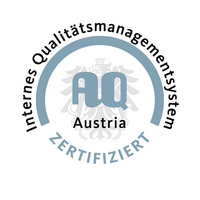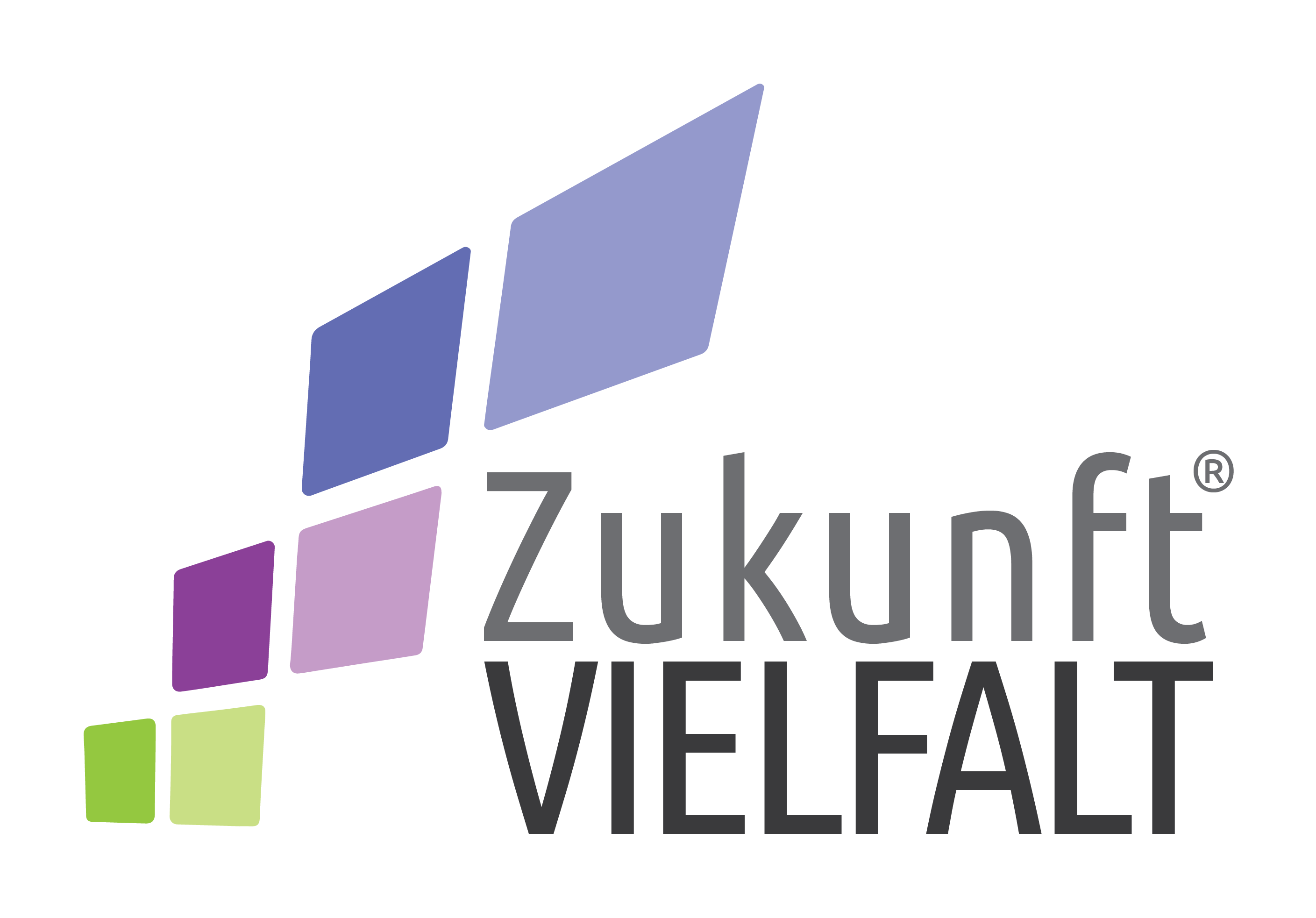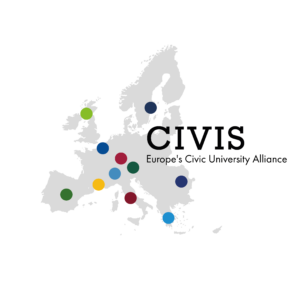Functional Materials Group
Research
Renewable energy conversion and storage are relevant topics in applied research today, since the use of non-fossil energy sources is essential for the reduction of CO2 emissions. Solar and wind energy harvesting combined with chemical energy storage in batteries or fuels like hydrogen are essential processes, which need to be improved in efficiency, long-term stability and scalability. Our goal is to contribute to the development of cost effective scalable solutions for energy conversion and storage.
Latest Publications
Morphological design of LaTiO2N particles by topotactic growth mechanisms for photocatalytic applications
Valérie Werner, Gregor A. Zickler, Simone Pokrant*, Morphological design of LaTiO2N particles by topotactic growth mechanisms for photocatalytic applications. Progress in Solid State Chemistry 2024, Volume 73. https://doi.org/10.1016/j.progsolidstchem.2024.100442
Exploring the Insertion Mechanisms of Metal Cations into V3O7·H2O
Daniela Söllinger, Jürgen Schoiber, Philipp L. Darge, Günther J. Redhammer, Simone Pokrant*, Exploring the Insertion Mechanisms of Metal Cations into V3O7·H2O. J. Phys. Chem. C 2024, 128, 5, 2255–2265. https://doi.org/10.1021/acs.jpcc.3c08056
Synthesis and Structure of the Double-Layered Sillén–Aurivillius Perovskite Oxychloride La2.1Bi2.9Ti2O11Cl as a Potential Photocatalyst for Stable Visible Light Solar Water Splitting
Exploring novel photocatalysts for solar water-splitting is a relevant measure to take towards sustainable hydrogen production. In this work, a fully titanium-based oxychloride, La2.1Bi2.9Ti2O11Cl, with a double-layered Sillén-Aurivillius intergrowth structure is fabricated via a facile one-step solid-state synthesis. A detailed crystal structure analysis is performed via powder X-ray diffraction and correlated to density functional theory calculations, followed by the demonstration of its photocatalytic activity for visible light-driven water oxidation.
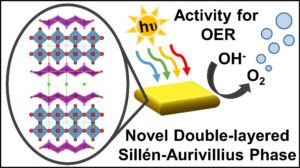
Valérie Werner, Ulrich Aschauer, Günther J. Redhammer, Jürgen Schoiber, Gregor A. Zickler, and Simone Pokrant*, Synthesis and Structure of the Double-Layered Sillén–Aurivillius Perovskite Oxychloride La2.1Bi2.9Ti2O11Cl as a Potential Photocatalyst for Stable Visible Light Solar Water Splitting. Inorg. Chem. 2023, 62, 17, 6649–6660. https://doi.org/10.1021/acs.inorgchem.3c00116
Exploring the insertion properties of Mg2+ in H2V3O8 as a function of the water content in the organic electrolyte
D. Söllinger, G. J. Redhammer, J. Schoiber, G. A. Zickler and S. Pokrant, Exploring the insertion properties of Mg2+ in H2V3O8 as a function of the water content in the organic electrolyte. Electrochimica Acta, 2022. https://doi.org/10.1016/j.electacta.2022.141294
Actualities
Oral presentation by Simone Pokrant, PANORAMA:UNI: „Wie kann die Energiewende gelingen? Hürden und Hoffnungen am Beispiel Energiespeicherung“
S. Pokrant hielt im Rahmen der Panorama:Uni am 16.10.2023 in Salzburg einen Vortrag zum Thema Energiewende.
New device characterization methods installed and operational!
in-operando XRD Faraday efficiency measurement Set-up
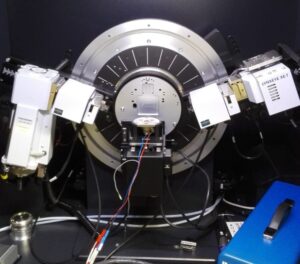
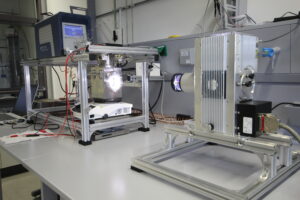
Infrastructure project BioMat TEM was granted!
The functional materials group is proud of being part of the project team BioMat-TEM. The aim of this project is the upgrade of the local transmission electron microscope with a cryo unit and an energy filter (1,9 MEu). It will enable subnanometer imaging and analysis of beam sensitive materials like energy materials or biomaterials.
For more information, click here and here.
Showcases for research enabled by the energy filter/cryo upgrade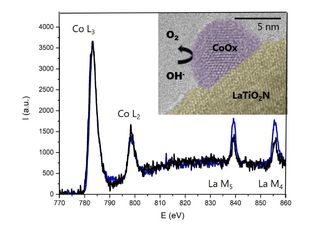
Oxidation state determination of CoOx cocatalyst nanoparticles with a size of 5-40 nm by core loss EELS. The cocatatalysts are deposited on the photocatalyst LaTiO2N (adapted from Pokrant S. et al., Materials Today Energy, 5, 2017, 158)
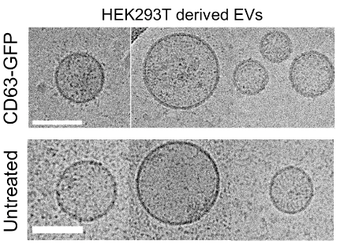
Cryo transmission electron micrograph of extracellular vesicles, scaling bar 100 nm (adapted from Corso G., Meisner-Kober N. et al., Journal of Extracellular Vesicles, 8, 2019, 1663043 )


